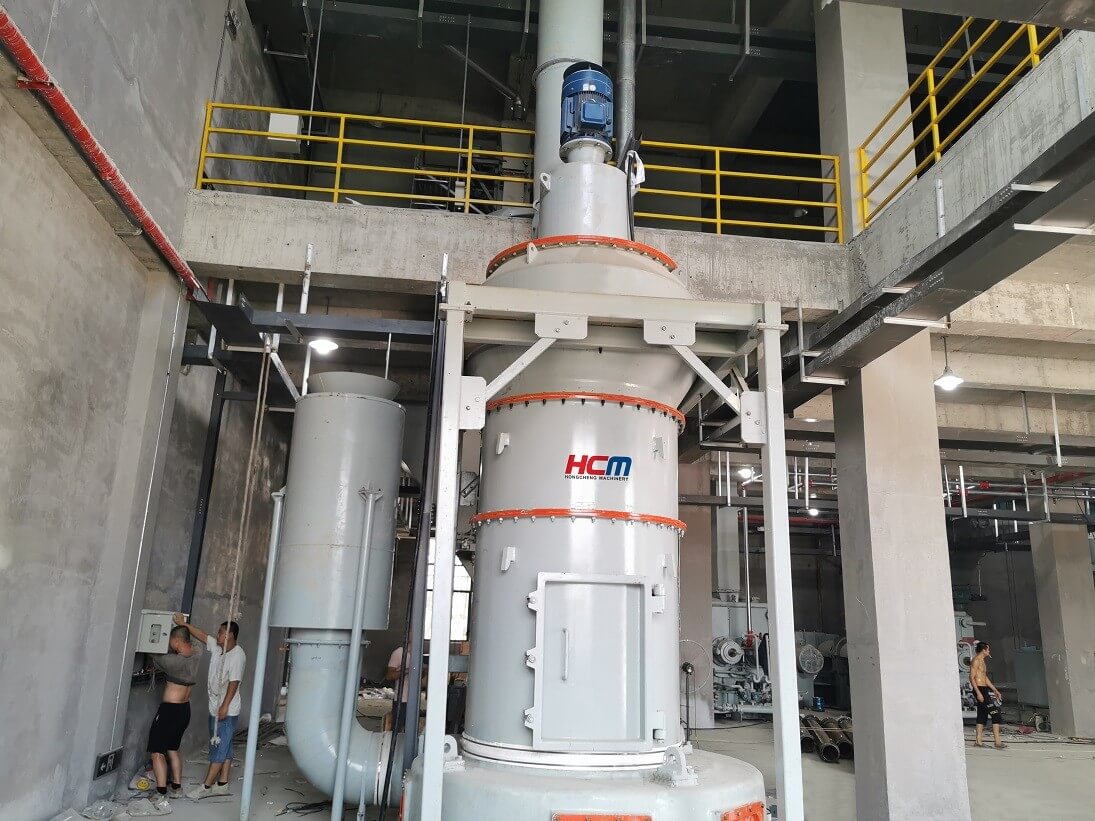Heavy calcium, also known as ground calcium carbonate. It is an inorganic compound made by grinding calcite, marble, limestone and other ore raw materials through a heavy calcium mill. So, what is the difference between the heavy calcium produced by these ore raw materials? Guilin Hongcheng, as a heavy calcium grinding mill manufacturer that has been deeply involved in the calcium carbonate industry for many years, will tell you today, what is the difference between calcite, marble and limestone in the production of heavy calcium?
1. Comparing Calcite, Marble and Limestone
Calcite: The ore has clear cleavage and light transmission. The surface is divided into clear planes, and the planes are still visible after being broken. Calcite mining areas are widely distributed, and the ores are also divided into large calcite and small calcite. The large calcite has clear, regular, and high transparency; the small calcite has chaotic, fine, and irregular cleavage. It should be noted that calcite ore has three hues, milky white phase, yellowish phase, and reddish phase. There may be differences in hue in each production area, and the optical properties of processed heavy calcium powder have certain differences. In addition, the calcium content of calcite is higher than that of marble and limestone, which can reach more than 99%. The metal impurities are mostly Fe, Mn, Cu, etc., with a relative density of 2.5~2.9g/cm3 and a Mohs hardness of 2.7~3.0.
Marble: Also known as dolomite, it is composed of calcite, limestone, serpentine, and dolomite. Among them, the composition of calcium carbonate accounts for more than 95%, the Mohs hardness is between 2.5-5, and the density is 2.6 to 2.8g/cm³. The ore is divided into coarse crystal ore and fine crystal ore, and the crystal is generally in the shape of a cube. Marble is mainly blue (gray) white. The content of impurities such as magnesium oxide (0.2%~0.7%), ferric oxide (<0.08%), manganese (1~50mg/kg) has obvious differences due to different production areas.
Limestone: Limestone is a rock containing a single calcite mineral component. It is a combination of fine or aphanitic crystals. It exists in two phases of calcite and aragonite, and is brittle and dense in nature. Calcium carbonate in limestone accounts for more than 95%, and contains a small amount of dolomite, siderite, quartz, feldspar, mica and clay minerals that can reflect the color of the stone, mainly in white and gray. The main impurities of limestone are silicon dioxide, aluminum oxide, iron oxide, magnesium, strontium, etc. The Mohs hardness is 3.5~4, and the density is 2.7g/cm3.
2. Differences in the uses of calcite, marble and limestone
Plastic: Marble and calcite are widely used, but calcite and marble have different hues and crystal structures. After filling in plastic products, the product color, tensile strength and impact resistance will have certain differences. Calcite belongs to the hexagonal crystal system, and the crystal is generally in the shape of a jujube nucleus, with a relatively large length and diameter; marble crystals are generally cubic, with a relatively small length and diameter. For example, calcite heavy calcium and marble heavy calcium with the same particle size distribution are filled with PVC pipe profiles and other products under the same formula conditions. Products made of marble powder are more brittle and less tough than calcite powder.
Papermaking: Calcite and marble with low ore hardness and softer quality are selected as heavy calcium carbonate raw materials, and the equipment wear rate is low, which is beneficial to protect and prolong the life of the filter screen, cutter head and other components of the paper machine.
Latex paint: The composition of different calcium carbonate raw ores is quite different. Generally, the purity of calcite ore is high, and the calcium carbonate content is above 96%. The content of impurities such as magnesium oxide and ferric oxide is low or easy to remove, and the latex paint is more stable.

Heavy Calcium Raymond Mill HC1300, welcome to leave a message or consult [email protected]
Based on the calcium carbonate industry chain, Guilin Hongcheng provides good equipment support for calcium powder processing enterprises. The heavy calcium production equipment such as Raymond mill, ring roller mill, and ultra-fine vertical mill produced by us are also well received by various heavy calcium production enterprises. If you have relevant needs, please leave us a message to learn more about the equipment.